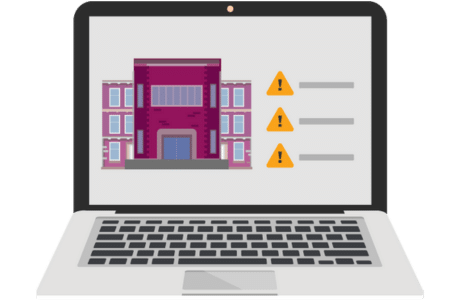Pupil absenteeism is a growing challenge that many schools are facing, recently labelled “the new epidemic in schools” by the head of Education at the Centre for Social Justice Centre. According to the Department for Education, more than one in five children in England, equal to 1.8m children, are frequently missing school and over the last academic year, 22.3% of pupils in England were persistently absent.
Along with school leaders, ministers and policymakers are increasingly concerned about higher levels of absence in many schools since the COVID-19 pandemic and are developing initiatives to try to get children back into class.
According to the Department for Education’s latest attendance data, during the autumn and spring terms of 2021-22, more than 110,000 pupils were severely absent, meaning they missed at least half of their time in school – this is up from 57,000 pupils pre-pandemic. The data also revealed that:
- Overall absence rose from 4.6% in 2020-21 to 7.6% last year
- Persistent absence – where pupils miss 10% or more classes – increased from 12.1% to 22.5% over the same period, equating to around 1.6 million pupils
- Severe absence – the proportion of pupils missing 50% or more sessions – rose from 1.1% in 2020-21 to 1.7% last year, equating to around 120,000 pupils
- Attendance data up to March 2023 shows the absence rate was 22.3%
These statistics highlight the severity of pupil absenteeism and are a reminder of the need for schools and other settings to ensure they have effective safeguarding processes in place to be able to address and monitor concerns such as absenteeism.
What is driving the rise in absenteeism?
According to education charity School-Home Support (SHS) which works with persistently absent pupils and their families to improve school attendance, poor-quality housing is an increasing barrier to school attendance and one of the top three issues for the pupils it supports. The proportion of children citing housing concerns as an obstacle to attendance jumped from 11% last year to 19% last academic year.
Other issues driving absenteeism according to the charity, are feelings and behaviour, cited by 27% of pupils, and confidence and self-esteem, cited by 25% of pupils.
Increased anxiety and lack of mental health support are also contributing to the increase in children missing school since the COVID-19 pandemic, with some children struggling to leave the house.
The risk of children falling behind
School attendance is vital not only for children’s achievement, but also for their wellbeing and wider development. The Department for Education states that pupils need to attend school regularly to benefit from their education, which is central to ensuring all pupils can fulfil their potential.
Missing out on lessons leaves children vulnerable to falling behind. Attendance and achievement statistics recorded by the Department for Education highlight that pupils who performed better both at the end of primary and secondary school missed fewer days than those who didn’t perform as well. The data also revealed that students with the highest attendance throughout their time in school gained the best GCSE and A-Level results.
Why is the recording and monitoring of attendance an important aspect of safeguarding?
The Department for Education’s Working together to improve school attendance guidance, highlights that all schools have an ongoing responsibility to proactively manage and improve attendance across their school. It also states that schools and local authorities must:
- Promote good attendance and reduce absence, including persistent absence
- Act early to address patterns of absence
- Regularly monitor and analyse attendance and absence data to identify pupils or cohorts that require support with their attendance and put effective strategies in place
- Share information and work collaboratively with other schools in the area, local authorities, and other partners when absence is at risk of becoming persistent or severe
How CPOMS can help
CPOMS safeguarding software allows schools and other settings to:
- Log safeguarding concerns in a single platform. These can be categorised and monitored frequently which is vital for building chronologies and recognising early signs of any safeguarding issues like absenteeism.
- Share concerns efficiently and securely with relevant staff members which is key to helping children get the support they need.
- Create a full picture of a child’s safeguarding needs, enabling any patterns and concerns to be identified earlier.
- Simplify and enhance safeguarding processes, eliminating the need to reformat files, send secure emails and make countless phone calls.
With CPOMS Engage, schools can share safeguarding information across settings and with their local authority through a seamless, secure transfer between systems.
The software can also help local authorities monitor Children Missing in Education (CME), enabling them to on roll CME onto the software and track if a transfer request comes in from another CPOMS school, anywhere in the country.
Summary
The increasing rise of pupil absenteeism highlights the importance of early intervention, multi-agency collaboration between schools and local authority organisations, and the need for investment in tools to monitor and share safeguarding information more easily to ensure better outcomes for children.
To find out more about how CPOMS safeguarding software solutions could be used to benefit your setting, book a free demo.




